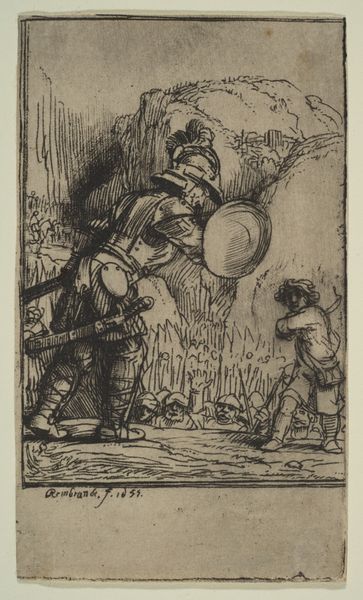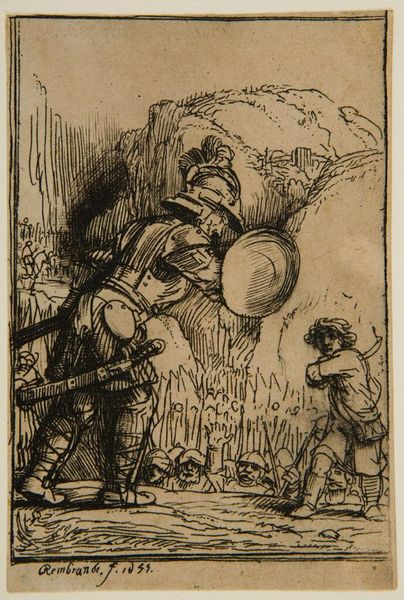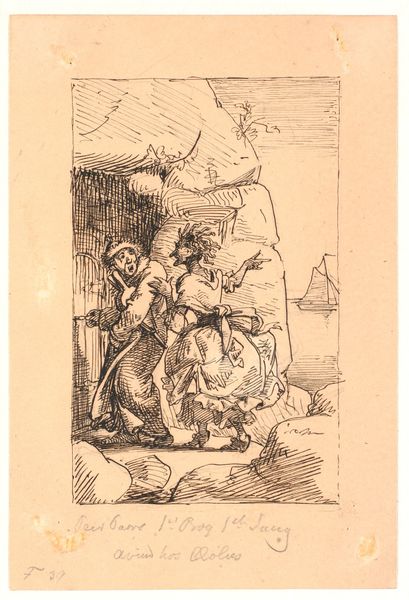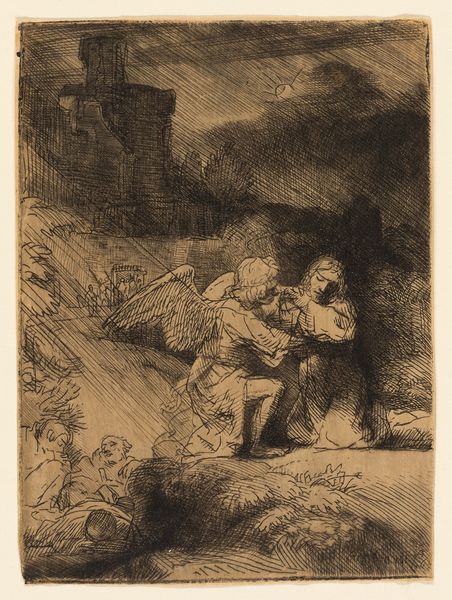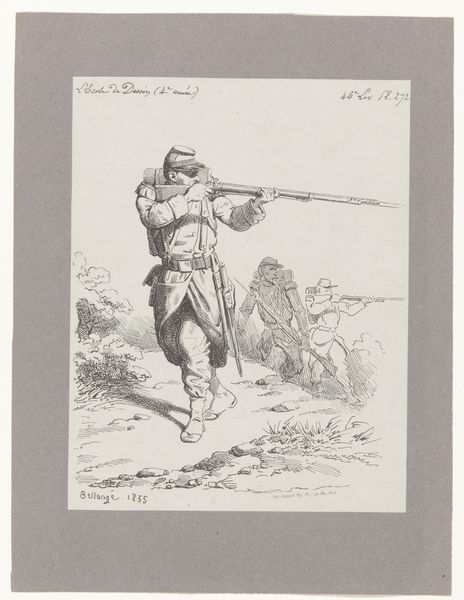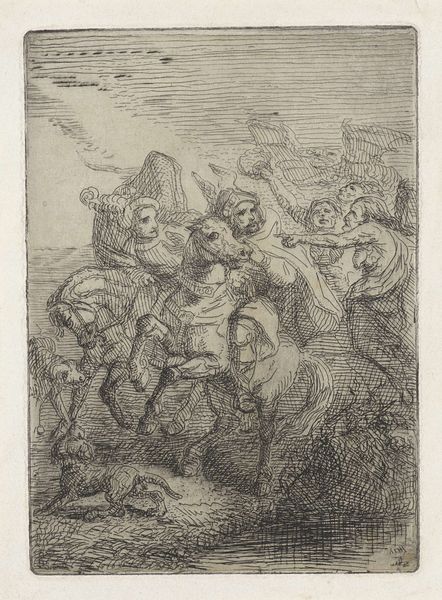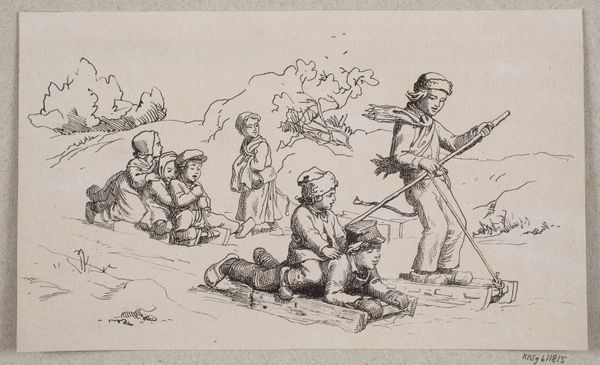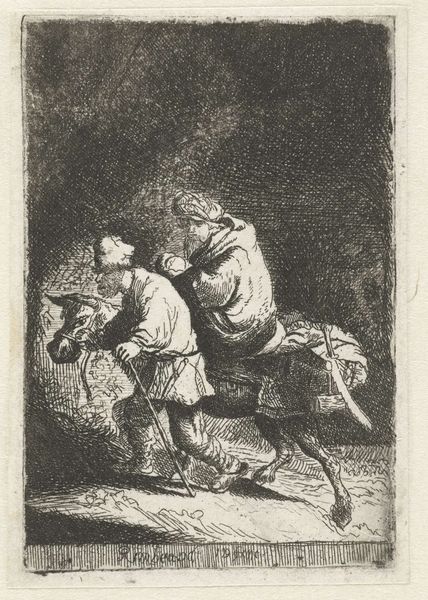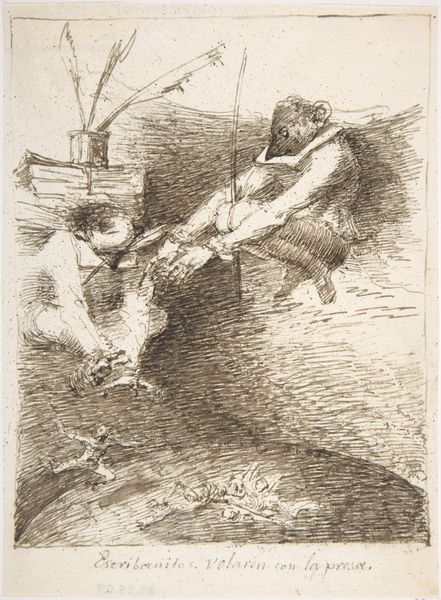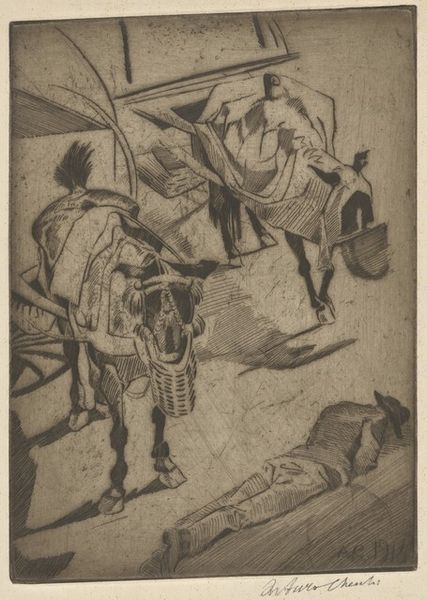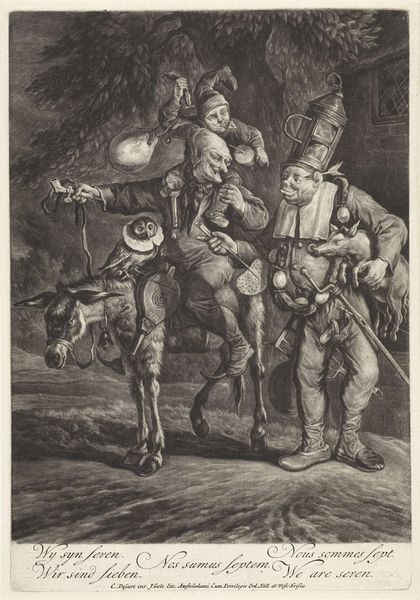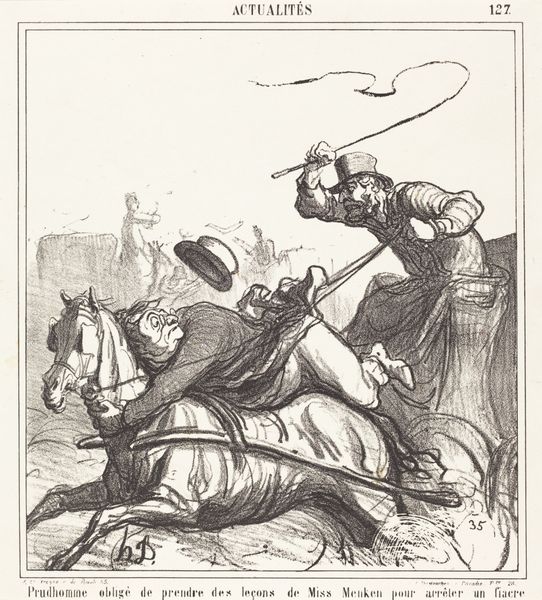
drawing, print, etching, paper, ink
#
drawing
#
narrative-art
#
baroque
# print
#
etching
#
figuration
#
paper
#
ink
#
line
#
history-painting
Dimensions: 108 × 73 mm (image); 111 × 75 mm (sheet)
Copyright: Public Domain
Editor: Here we have Rembrandt van Rijn's "David and Goliath," an etching in ink on paper from 1655. It feels incredibly dynamic for such a small work; the artist has successfully used line work to make the figures spring to life. What are your immediate impressions, looking at it through a formalist lens? Curator: The strength of this print resides primarily in its sophisticated use of line and shadow. Consider how Rembrandt contrasts the density of lines composing Goliath's armor with the comparatively sparser depiction of David. The deep etching creates a dramatic contrast, underscoring Goliath’s imposing physical presence, almost a visual barrier. Do you notice how the artist used very little negative space? Editor: Yes, the texture is amazing. It is busy, which adds a certain anxiousness. Everything competes for attention within a limited space. Can we talk a little bit more about what the artist may be trying to show? Curator: Note the interplay between the dark hatching of the shadowed areas and the stark white paper that models areas of highlights, specifically in David’s face. That detail contributes a lot. Also consider how Rembrandt is very deliberate with his linear strokes. There is variety, creating visual interest and guiding the viewer's eye through the narrative. He focuses our vision through manipulating form. It contributes to understanding what's significant. Editor: That makes me wonder, could those linear strokes, particularly around David, suggest a sense of swift movement? He almost seems blurry, reinforcing the speed and surprise of his attack on the other guy. Curator: An interesting observation. A valid reading could stem from your suggestion that these visual decisions contribute directly to an artwork’s meaning, and ultimately affect our perception. By closely observing Rembrandt’s technique, and his purposeful line-making and gradations, you can analyze and begin interpreting form in art, apart from any other readings. Editor: This close look made me realize how crucial Rembrandt’s choices with etching techniques were. It’s a perfect study in the formal aspects that constitute storytelling. Curator: Indeed, analyzing Rembrandt's skill has broadened our visual understanding, underlining the power of pure form.
Comments
No comments
Be the first to comment and join the conversation on the ultimate creative platform.
